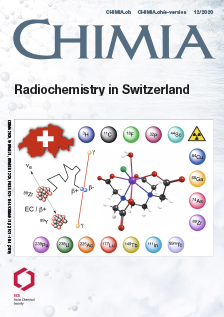Radionuclide Chemistry in Nuclear Facilities Based on Heavy Liquid Metal Coolants: Past, Present and Future
DOI:
https://doi.org/10.2533/chimia.2020.976PMID:
33357291Keywords:
Accelerator driven system, Gas phase radiochemistry, Gen iv reactors, Spallation targets, TransmutationAbstract
Heavy liquid metals such as lead and lead bismuth eutectic (LBE) are considered as spallation target material for next-generation neutron sources and as coolant of fast spectrum nuclear reactors that are developed to facilitate more efficient use of nuclear fuel as well as transmutation of long-lived nuclear waste. During the operation of such facilities, the heavy liquid metal will be activated by nuclear reactions. Additionally, fission product radionuclides may be introduced into the liquid metal from leaking fuel pins or by fission of the target nuclei in spallation. The chemical behaviour of these radioactive contaminants in the liquid metal – especially their immediate volatilization or volatilization of formed secondary compounds – may affect the safety of such facilities. The present article summarizes the activities of PSI's Laboratory of Radiochemistry towards a better understanding of the chemistry of potentially hazardous radionuclides in LBE and discusses aspects that need to be addressed in future to support the licensing of heavy liquid metal-based nuclear facilities.Downloads
Published
2020-12-23
Issue
Section
Scientific Articles
License
Copyright (c) 2020 Jörg Neuhausen

This work is licensed under a Creative Commons Attribution-NonCommercial 4.0 International License.
How to Cite
[1]
Chimia 2020, 74, 976, DOI: 10.2533/chimia.2020.976.







